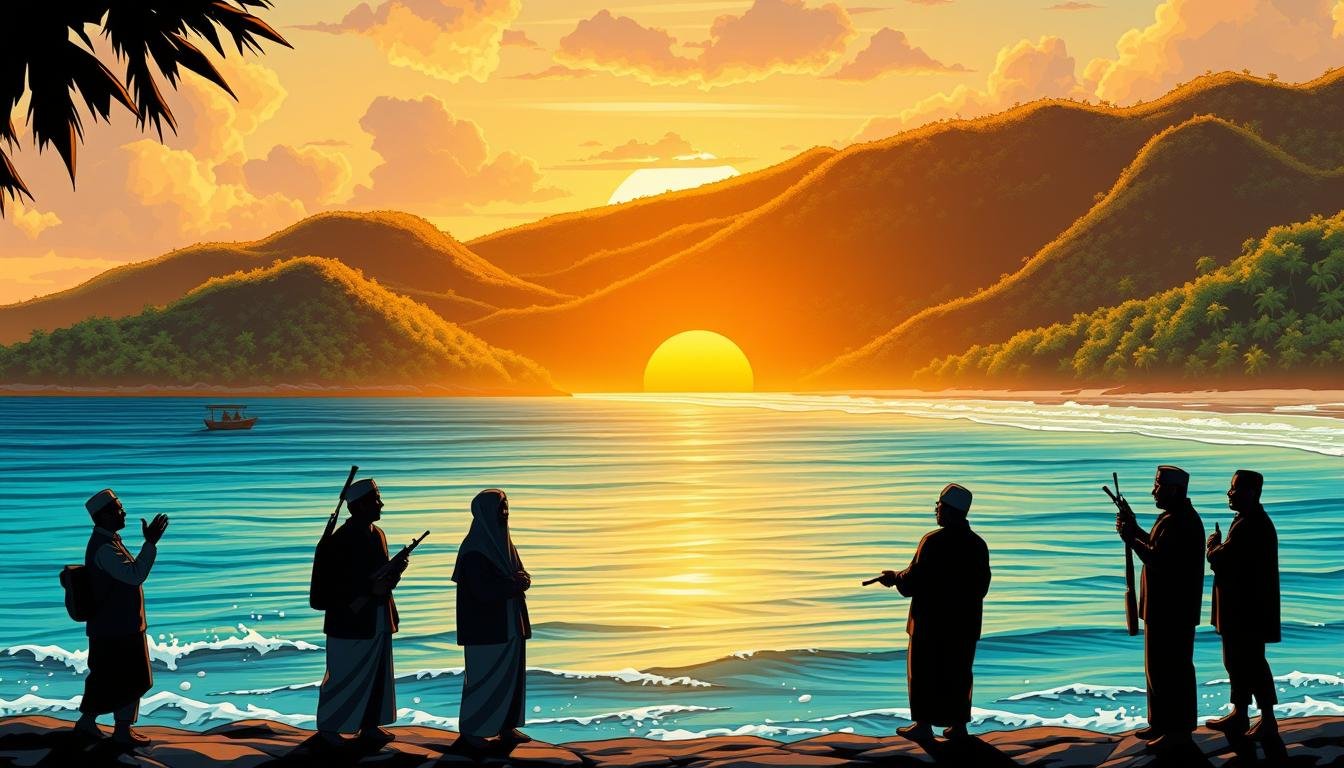Mindanao, the southernmost region of the Philippines, has long been a focal point of historical and cultural significance. The region is home to diverse communities, including a significant Muslim population. Over the centuries, Mindanao has experienced complex dynamics shaped by colonial influences and internal struggles.
The term “Moro” refers to the Muslim inhabitants of the region, whose identity has been deeply influenced by Spanish colonialism and U.S. military rule. This historical context has played a crucial role in shaping the ongoing conflict in the southern Philippines. The struggle for autonomy and recognition has been a central theme in the region’s history.
Efforts to achieve peace have seen significant milestones, including the creation of autonomous regions and various peace agreements. These initiatives aim to address the grievances of the Muslim communities and foster lasting stability in Mindanao. Despite these efforts, challenges remain, highlighting the need for continued dialogue and cooperation.
Key Takeaways
- Mindanao is a region in the Philippines with a significant Muslim population.
- The term “Moro” refers to the Muslim inhabitants of Mindanao.
- Historical influences have shaped the ongoing conflict in the region.
- Peace efforts include the creation of autonomous regions and peace agreements.
- Challenges remain in achieving lasting stability in Mindanao.
Historical Overview of the Moro People
The origins of the Muslim communities in Mindanao trace back to ancient migrations and cultural exchanges. These groups, often referred to as the Moro, have a history deeply intertwined with the spread of Islam in the region. The term itself derives from the Spanish word for “Moors,” reflecting colonial encounters.
Origins and Etymology
The name “Moro” was adopted during Spanish colonial rule, drawing parallels between the Muslim inhabitants of Mindanao and the Moors of North Africa. This label, though externally imposed, became a unifying identity for the diverse Muslim groups in the region. Their history, however, predates colonial influences.
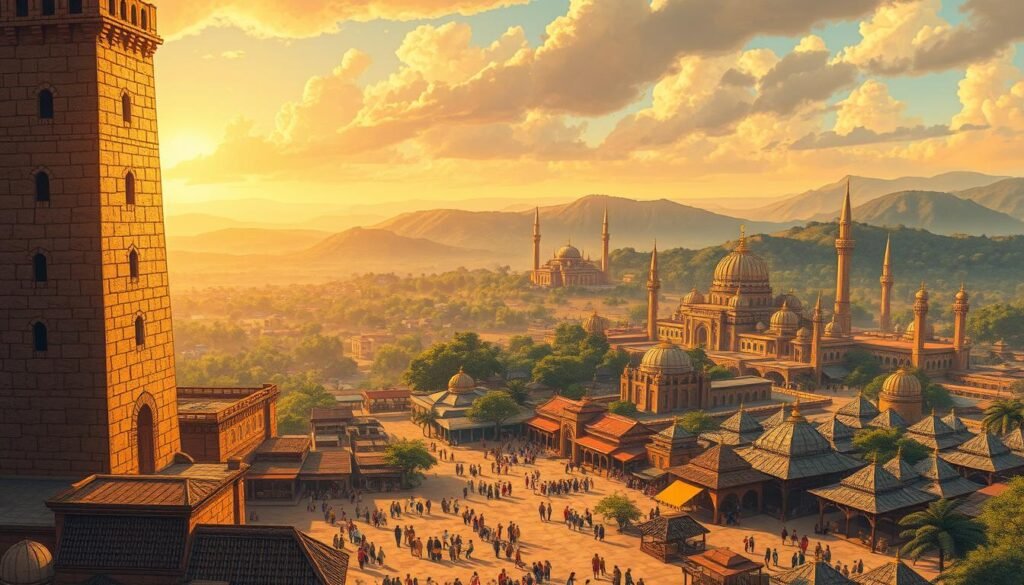
Pre-Colonial Sultanates and Society
Before Spanish colonization, the Muslim population in Mindanao established powerful sultanates, such as the Sultanate of Sulu and the Sultanate of Maguindanao. These sultanates were centers of governance, trade, and culture. They were governed by indigenous laws, known as adat, which emphasized justice and community harmony.
The sultanates controlled vast lands and islands, fostering a society rich in tradition and order. Their legal systems were deeply rooted in Islamic principles, ensuring stability and cohesion among the population. This foundation laid the groundwork for the region’s resistance to colonial rule.
| Sultanate | Established | Key Features |
|---|---|---|
| Sultanate of Sulu | 15th Century | Trade hub, maritime power |
| Sultanate of Maguindanao | 16th Century | Agricultural center, strong governance |
The demographic landscape of Mindanao during this period was shaped by migration and settlement. The Muslim population grew, forming distinct ethnic groups that contributed to the region’s cultural diversity. This historical context highlights the resilience and adaptability of these communities.
Spanish Colonial Encounters and the Moro Resistance
The arrival of Spanish colonizers in the Philippines marked a turning point for the Muslim communities in Mindanao. The Spanish sought to impose their government and Christian faith, leading to a cultural clash that shaped centuries of conflict. Their efforts included forced conversions and military campaigns aimed at subduing the Muslim population.
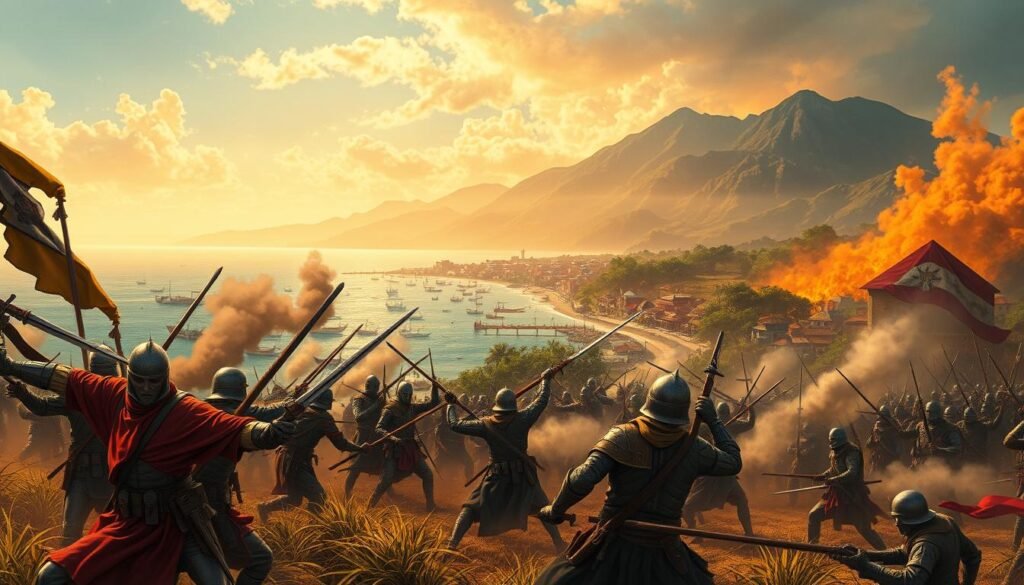
The resistance strategies employed by the Muslim groups were both strategic and resilient. They fought to preserve their Islamic traditions and autonomy, often engaging in guerrilla warfare. The destruction of cultural sites by the Spanish further fueled their determination for national liberation.
Impact of Spanish Conquest on Moro Culture
Spanish colonial policies disrupted the traditional way of life in Mindanao. Attempts to convert the Muslim population to Christianity were met with fierce opposition. The cultural clash between Spanish-Christian ideals and Islamic practices deepened the divide.
Punitive expeditions and the destruction of mosques and schools were common tactics. These actions aimed to weaken the Muslim identity but instead strengthened their resolve. The resistance became a symbol of their fight for independence.
Longstanding Struggle for Independence
The struggle against Spanish rule lasted for over three centuries. Muslim groups formed alliances and liberation fronts to resist colonial domination. Their efforts were driven by a shared goal of preserving their heritage and autonomy.
Despite the overwhelming military power of the Spanish, the Muslim communities in Mindanao never fully surrendered. Their resistance laid the foundation for future movements seeking national liberation and self-determination.
U.S. Military Rule and the Aftermath of the Moro Rebellions
The United States’ entry into the Philippines brought significant changes to Mindanao’s political landscape. After the Spanish-American War, the U.S. assumed control over the southern Philippines, establishing the Moro Province in 1903. This marked a new era of governance and resistance in the region.
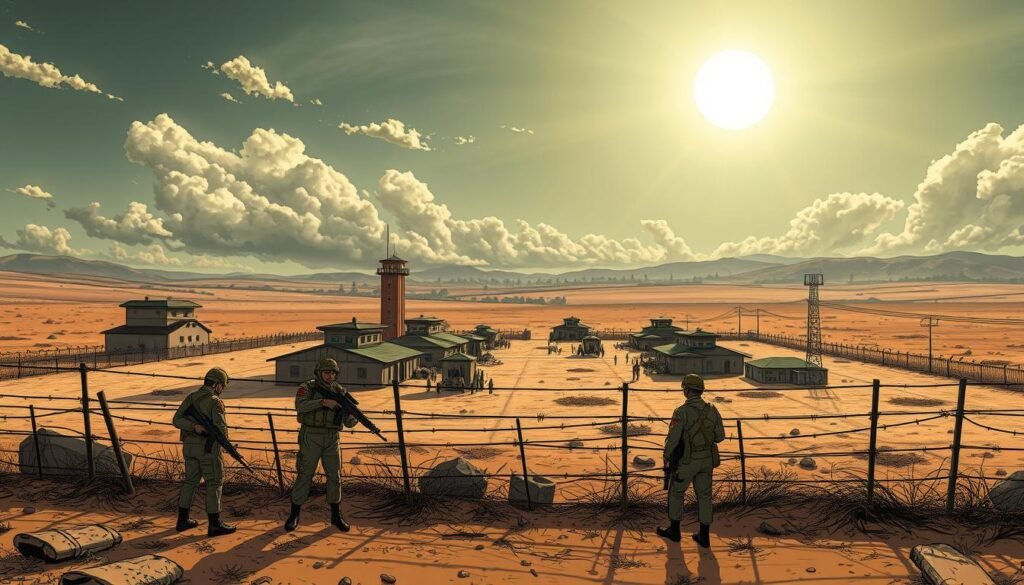
The Bud Dajo Massacre and Rebellions
One of the most tragic events during this period was the Bud Dajo massacre in 1906. U.S. forces attacked a group of Muslim villagers seeking refuge on Mount Dajo, resulting in heavy casualties. This event remains a symbol of the brutal suppression faced by the local population.
American records often justified the massacre as a necessary measure to maintain authority. However, Philippine accounts highlight the loss of innocent lives and the deep scars it left on the community. This incident fueled further resistance against U.S. rule.
Pacification Campaigns and Their Legacy
The U.S. military employed a dual strategy of suppression and “civilization” efforts. They aimed to dismantle traditional governance structures, such as the role of local datus, and replace them with a centralized state system. This included administrative reorganization and the introduction of new policies.
Despite these efforts, the Muslim communities in Mindanao continued to resist. The legacy of U.S. colonial interventions shaped their struggle for national identity and self-governance. The establishment of the Moro Province redefined the relationship between the local and national levels of governance.
- The Moro Province was divided into five districts: Cotabato, Davao, Lanao, Sulu, and Zamboanga.
- U.S. policies aimed to integrate the region into the broader Philippine state.
- The resistance movements laid the groundwork for future calls for autonomy.
The impact of U.S. military rule continues to influence the region’s political and cultural dynamics. The struggle for recognition and self-determination remains a central theme in Mindanao’s history.
Societal and Cultural Impact on Mindanao’s Muslim Communities
Decades of conflict and colonization have left a lasting impact on the Muslim communities in Mindanao. The region’s demographic and cultural landscape has been reshaped by displacement, migration, and the resilience of its people. These changes have influenced the identity and practices of the Muslim population in profound ways.
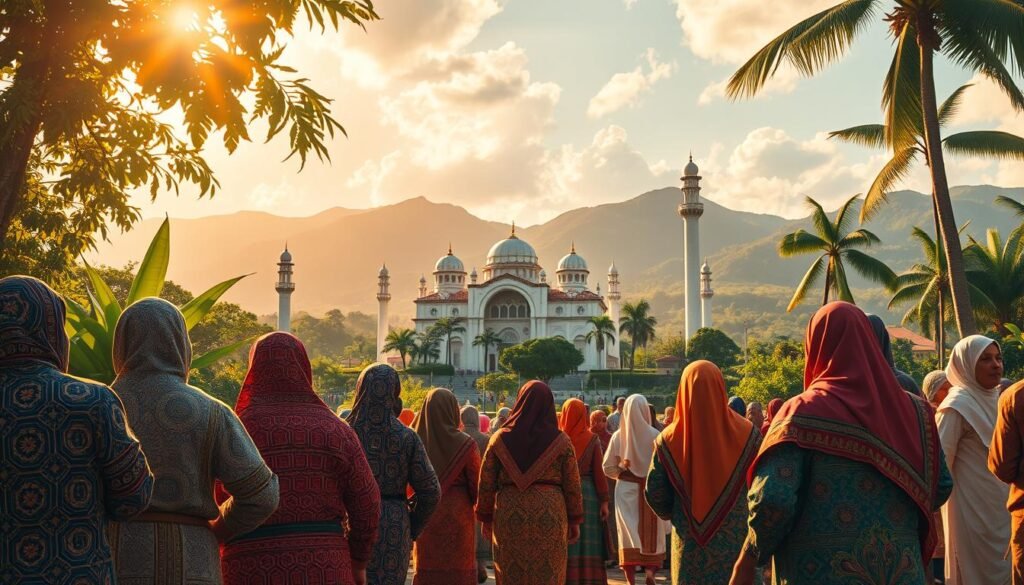
Displacement, Migration, and Demographic Shifts
The prolonged conflict in Mindanao has led to widespread displacement of its Muslim population. Many families were forced to leave their ancestral lands, seeking refuge in safer areas. This migration has significantly altered the demographic profile of the region.
Non-Muslim Filipinos have also resettled in historically Muslim territories, leading to cultural and social tensions. The influx of settlers has impacted land ownership and resource distribution, further complicating the region’s dynamics.
“The displacement of communities has not only disrupted lives but also challenged the preservation of cultural heritage.”
Below is a summary of key demographic changes:
| Period | Event | Impact |
|---|---|---|
| Mid-20th Century | Government-led migration | Increased non-Muslim population in Mindanao |
| 1970s | Sabah refugee crisis | Over 70,000 Filipino Muslims displaced |
| 2013 | Zamboanga conflict | 110,000 new refugees |
Cultural Identity and Religious Practices
Despite these challenges, the Muslim communities in Mindanao have worked tirelessly to preserve their cultural identity. Islamic practices, such as daily prayers and fasting during Ramadan, remain integral to their way of life. Traditional attire, like the malong and hijab, continues to symbolize their heritage.
Local organizations and educational institutions have played a crucial role in sustaining this identity. Schools offering Islamic education and community networks have helped pass down traditions to younger generations.
- Islamic schools teach Quranic studies and Arabic language.
- Community events celebrate cultural festivals and religious holidays.
- Traditional crafts, such as weaving, are promoted to preserve artisanal skills.
The resilience of these communities highlights their commitment to maintaining their identity amidst adversity. Their efforts serve as a testament to the enduring spirit of the Muslim population in Mindanao.
Peace Negotiations: From ARMM to BARMM and Future Prospects
The journey toward lasting peace in Mindanao has been marked by significant milestones and persistent challenges. The transition from the Autonomous Region in Muslim Mindanao (ARMM) to the Bangsamoro Autonomous Region in Muslim Mindanao (BARMM) represents a pivotal shift in the region’s political landscape. This evolution reflects decades of negotiations, legislative efforts, and the creation of frameworks aimed at addressing historical grievances.
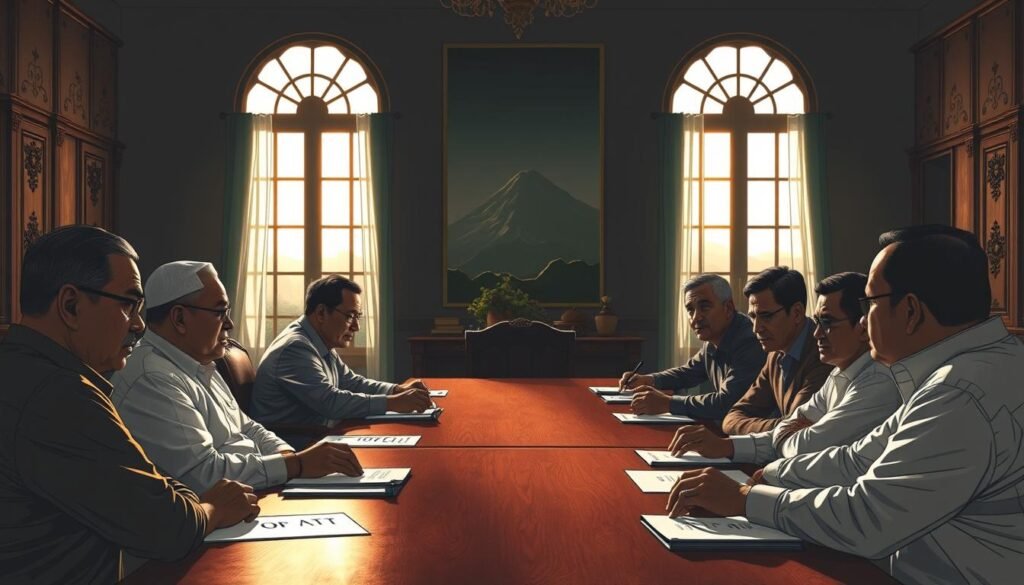
Landmark Agreements and Legislative Milestones
The peace process in Mindanao has seen several key agreements between the Philippine government and groups like the Moro Islamic Liberation Front (MILF) and the Moro National Liberation Front (MNLF). The Comprehensive Agreement on the Bangsamoro (CAB), signed in 2014, laid the groundwork for the establishment of BARMM. This agreement aimed to address issues of governance, wealth-sharing, and security, fostering a more inclusive autonomous region.
Legislative milestones, such as the passage of the Bangsamoro Organic Law in 2018, further solidified this transition. The law provided the legal framework for BARMM, granting it greater political and fiscal autonomy. These efforts highlight the commitment of stakeholders to achieve a negotiated settlement and lasting peace.
Implementation Challenges and Roadmaps to Peace
Despite these achievements, the implementation of peace accords has faced significant hurdles. Issues such as disarmament, demobilization, and reintegration of former combatants remain complex. Additionally, the region’s high poverty rates and unemployment continue to fuel tensions, making sustainable development a critical priority.
Roadmaps to peace emphasize the need for inclusive governance, economic growth, and social justice. Initiatives like the Bangsamoro Development Plan aim to improve education, health, and job opportunities. However, the success of these efforts depends on sustained collaboration between the Philippine government, local leaders, and international partners.
“The transition to BARMM represents a historic opportunity to build a more peaceful and prosperous Mindanao.”
For more details on the peace process, visit the Bangsamoro Peace Process and Comprehensive Agreement on the Bangsamoro.
Moro Identity: Unity, Resistance, and Cultural Resilience
The term “Moro” has undergone a profound transformation over centuries, evolving from a colonial label to a unifying identity. Originally used by Spanish colonizers to describe the Muslim inhabitants of Mindanao, the term was initially derogatory. However, over time, it has been reclaimed by the community as a symbol of unity and resistance.
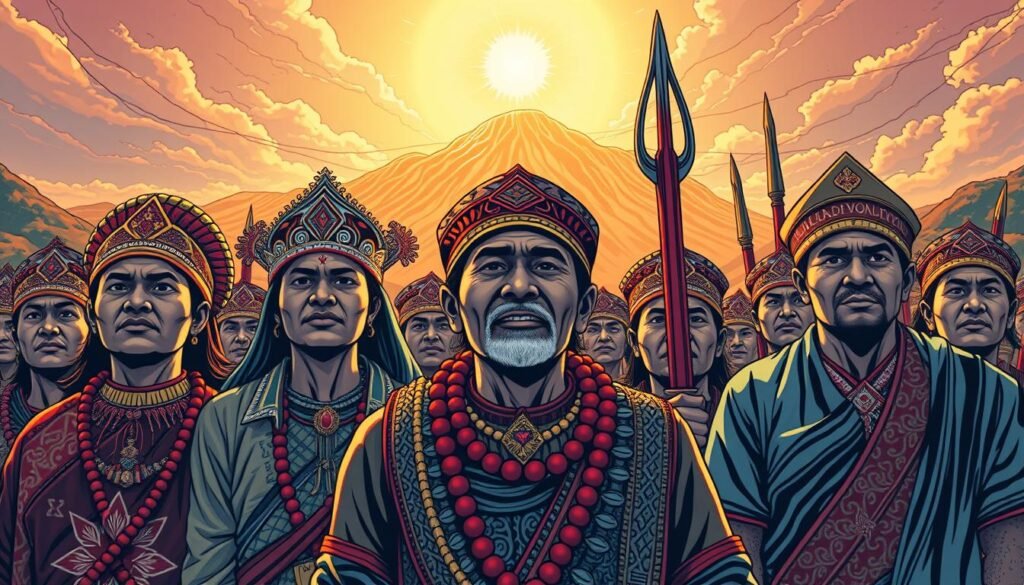
Evolution of the Term and Community Self-Perception
During the colonial era, the term “Moro” was imposed by Spanish rulers, drawing parallels to the Moors of North Africa. Despite its origins, the Muslim communities in Mindanao embraced the term, transforming it into a marker of identity. This shift reflects their resilience and determination to preserve their cultural heritage.
Groups like the Moro National Liberation Front (MNLF) played a pivotal role in this transformation. The MNLF, founded in the 1970s, adopted the term as a rallying cry for self-determination. Their efforts highlighted the importance of cultural identity in the struggle for national liberation.
Cultural Resilience and Leadership
Cultural resilience has been central to the Moro resistance. Traditional practices, such as Islamic education and community festivals, have been preserved despite external pressures. Leaders within the MNLF and related groups have emphasized the importance of unity and self-perception in strengthening community bonds.
For example, figures like Nur Misuari, the founder of the MNLF, have been instrumental in organizing the community. Their leadership has inspired a sense of pride and purpose, reinforcing the Moro identity as a symbol of resistance and independence.
“The Moro identity is not just a label; it is a testament to our enduring spirit and fight for justice.”
Impact on Philippine Society
The Moro resistance has had a lasting impact on Philippine society. Their struggle for autonomy and recognition has challenged historical narratives and fostered a broader understanding of cultural diversity. The transition from ARMM to BARMM reflects the ongoing efforts to address these issues.
For more insights into the Moro identity and its historical context, visit this detailed analysis.
| Key Movements | Founding Year | Impact |
|---|---|---|
| Moro National Liberation Front (MNLF) | 1972 | Advocated for self-determination and cultural preservation |
| Moro Islamic Liberation Front (MILF) | 1984 | Focused on Islamic governance and autonomy |
The journey of the Moro people underscores the power of identity in shaping history. Their resilience continues to inspire movements for justice and equality in the Philippines and beyond.
Current Issues and Ongoing Regional Challenges
The modern landscape of Mindanao is shaped by unresolved land disputes and economic instability. These challenges are compounded by the presence of extremist groups, creating a complex environment for the Bangsamoro Autonomous Region. Addressing these issues is crucial for achieving lasting peace and stability in the southern Philippines.
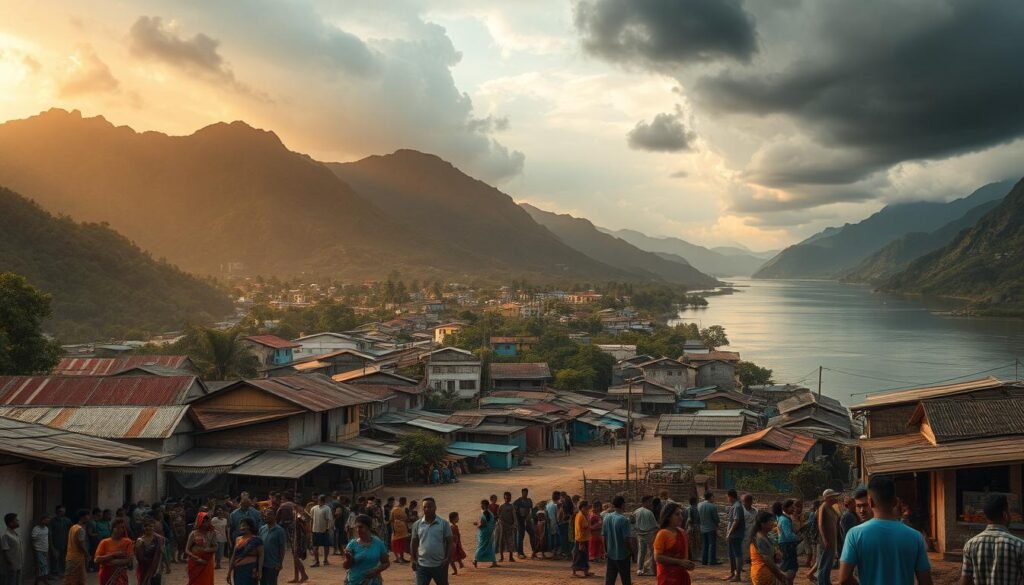
Land Disputes and Economic Implications
Land conflicts remain a significant issue in the region, often stemming from historical grievances and migration patterns. These disputes hinder economic development, as they create uncertainty for investors and local communities. For example, unresolved claims over ancestral lands have delayed infrastructure projects and agricultural expansion.
The economic implications are far-reaching. High poverty rates and unemployment persist, particularly in rural areas. Efforts to address these challenges include initiatives like the Bangsamoro Development Plan, which aims to improve livelihoods through education and job creation. However, progress is slow due to ongoing conflicts and governance issues.
Extremist Influences and Security Concerns
Extremist groups, such as the Bangsamoro Islamic Freedom Fighters (BIFF), continue to pose security threats. Their activities disrupt peacebuilding efforts and create fear among local populations. The presence of these groups also complicates the reintegration of former combatants into society.
Recent legislative developments, such as the Bangsamoro Organic Law, aim to address these challenges by strengthening governance and security frameworks. However, the region’s complex dynamics require sustained collaboration between local leaders, the Philippine government, and international partners.
“Addressing land disputes and security threats is essential for the long-term stability of the Bangsamoro region.”
Below is a summary of key challenges and initiatives:
| Challenge | Initiative | Impact |
|---|---|---|
| Land disputes | Bangsamoro Development Plan | Delayed economic growth |
| Extremist activities | Bangsamoro Organic Law | Improved security frameworks |
| Economic instability | Job creation programs | Reduced poverty rates |
For more insights into ongoing peacebuilding efforts, visit the UN’s initiative on fostering community reintegration.
Conclusion
The path to peace in the Bangsamoro region has been shaped by centuries of struggle and resilience. From colonial resistance to modern peace agreements, every part of this journey highlights the enduring spirit of its people. Over the years, milestones like the creation of BARMM have brought hope, yet challenges like land disputes and extremism persist.
Unity and cultural resilience remain vital in overcoming divisions. The region’s ability to adapt and thrive despite adversity is a testament to its strength. Efforts to address historical grievances and promote inclusive governance are key to building a peaceful future.
As the region moves forward, collaboration between local leaders, the government, and international partners will be crucial. The story of the Moro people reminds us that lasting peace is built on understanding, justice, and shared aspirations. For more insights into resilience, explore the Moro reflex and its significance.
FAQ
What is the significance of the Moro conflict in Mindanao?
The Moro conflict in Mindanao represents a long-standing struggle for autonomy and cultural preservation among Muslim communities in the southern Philippines. It has shaped the region’s history, politics, and social dynamics.
How did Spanish colonization affect the Moro people?
Spanish colonization disrupted the pre-colonial sultanates and imposed Christianization efforts. This led to centuries of resistance by the Moro people to protect their Islamic identity and independence.
What role did the U.S. play in the Moro rebellions?
During U.S. military rule, the Moro rebellions intensified, marked by events like the Bud Dajo Massacre. The U.S. implemented pacification campaigns, leaving a complex legacy of conflict and control in the region.
What is the Autonomous Region in Muslim Mindanao (ARMM)?
The ARMM was established to grant self-governance to Muslim-majority areas in Mindanao. It was later replaced by the Bangsamoro Autonomous Region in Muslim Mindanao (BARMM) to further address peace and development.
What are the key challenges in the peace process?
Challenges include land disputes, economic disparities, and extremist influences. Ensuring effective implementation of peace agreements remains critical for lasting stability in the region.
How has the Moro identity evolved over time?
The Moro identity has evolved from a term used by colonizers to a symbol of unity and resistance. It reflects the community’s enduring cultural resilience and commitment to self-determination.
What are the current issues facing Mindanao’s Muslim communities?
Current issues include land conflicts, economic marginalization, and security threats from extremist groups. Addressing these challenges is essential for sustainable peace and development.
Source Links
- The Mindanao Peace Talks: Another Opportunity to Resolve the Moro Conflict in the Philippines
- Mindanao Conflict: In Search of Peace and Human Rights
- Moro people
- Moro | History, Culture & Religion | Britannica
- Moro Muslims in the Philippines – Minority Rights Group
- Resistance and Pacification · The Philippines and the University of Michigan, 1870-1935 · Philippines
- Spanish–Moro conflict
- Moro Rebellion
- Milestones in the History of U.S. Foreign Relations
- Mindanao | Philippines, Culture, History | Britannica
- The Mindanao Conflict and the Direction of the Peace Process: A Sulu Refugee Perspective|Southern Philippines|Asia Peacebuilding Initiatives
- The Philippines (Chapter 6) – Negotiating Peace
- Philippines: Mindanao’s Unique Opportunity for a Just and Lasting Peace
- Personal Reflections on the Bangsamoro Struggle
- No title found
- Moro conflict
- Conflict analysis of Muslim Mindanao – GSDRC
- Who are the Moro people?
- Disaggregating Colonialism: Recent Trends in Philippine Muslim Studies – Civilizational Imperatives: Americans, Moros, and the Colonial World. By Oliver Charbonneau. Ithaca, N.Y.: Cornell University Press, 2020. xvi, 282 pp. ISBN: 9781501750724 (cloth). – American Datu: John J. Pershing and

